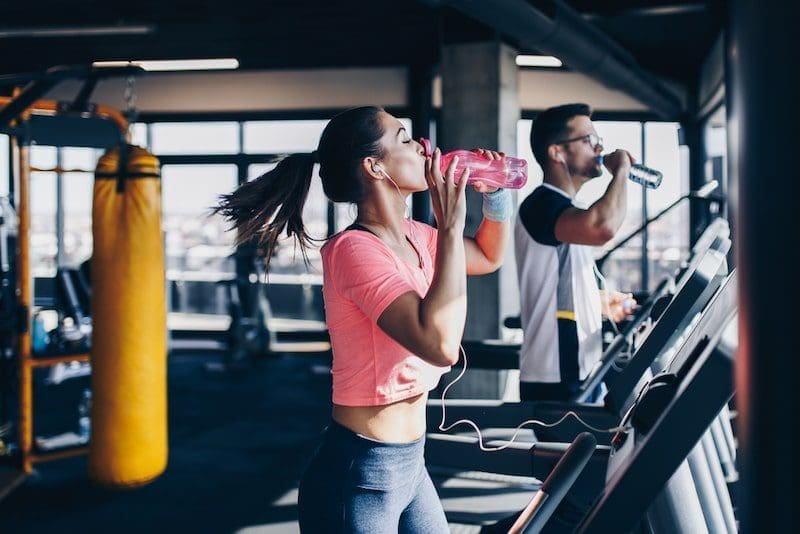In the realm of fitness and sports, where performance and recovery are paramount, innovative approaches to enhancing the body’s natural healing mechanisms have gained prominence. Platelet-Rich Plasma (PRP) and Platelet-Rich Fibrin (PRF) are two regenerative therapies that have garnered attention for their potential to accelerate healing and promote tissue regeneration. In this comprehensive guide, we will delve into the similarities and differences between PRP and PRF and explore how they can be valuable tools in the fitness and recovery journey.
PRP and PRF: A Shared Foundation
At their core, both PRP and PRF are derived from the patient’s own blood, making them autologous treatments. This means that the healing properties come directly from the individual’s body, reducing the risk of adverse reactions or allergies. The process for collecting PRP and PRF involves drawing a small amount of blood, typically from the arm, and then processing it to isolate the desired blood components.
PRP: A Closer Look
Composition:
PRP primarily consists of the plasma portion of the blood, rich in platelets and growth factors. These growth factors play a crucial role in tissue repair and regeneration.
Applications
Orthopedics
PRP has found widespread use in orthopedic medicine for conditions like tendonitis, ligament sprains, and osteoarthritis. Injecting PRP into affected areas helps stimulate tissue repair and reduce inflammation.
Dermatology
In dermatology, PRP is used for facial rejuvenation and hair restoration. It triggers collagen production and encourages hair follicle regeneration.
Sports Medicine
Athletes often opt for PRP therapy to expedite recovery from sports-related injuries like muscle strains and joint problems. This accelerates the healing process and minimizes downtime.
PRF: A Deeper Dive
Composition
PRF, like PRP, is derived from the patient’s own blood but has a different preparation process. PRF is collected without the use of anticoagulants, resulting in a higher concentration of platelets, white blood cells, and fibrin, a protein essential for wound healing.
Applications
Dental and Oral Surgery
PRF is extensively utilized in dental and oral surgery, particularly for procedures like dental implants and extractions. It aids in tissue regeneration, reduces bleeding, and enhances post-operative healing.
Facial Aesthetics
PRF is used for facial rejuvenation, similar to PRP. Its higher fibrin content offers potential benefits in terms of tissue support and longer-lasting results. For instance, one specific use for this is PRF under eye treatment, which can promote healthier skin and a more rejuvenated look. When paired with other treatments, it can form part of a strong holistic program to improve your appearance.
Chronic Wound Healing
PRF has shown promise in the management of chronic wounds, such as diabetic ulcers. The rich fibrin matrix assists in wound closure and tissue regeneration.
Key Differences
Composition:
PRP primarily consists of plasma, platelets, and growth factors.
PRF contains a higher concentration of platelets, white blood cells, and fibrin.
Anticoagulants
PRP requires anticoagulants during processing to prevent clotting.
PRF does not involve anticoagulants and relies on the body’s natural clotting ability.
Speed of Healing
PRP is known for its relatively rapid effects, often resulting in quicker tissue repair and recovery.
PRF may exhibit a slightly slower healing process due to its reliance on natural fibrin formation.
PRP, PRF, and Fitness
So, how do PRP and PRF fit into the fitness and recovery landscape?
PRP in Fitness
For fitness enthusiasts, PRP can be a game-changer. It accelerates the healing of muscle injuries, reduces downtime, and enables individuals to return to their workout routines more quickly.
PRP can also be used proactively to prevent injuries by strengthening ligaments, tendons, and joints.
PRF in Fitness
PRF’s rich fibrin content makes it an excellent choice for those in sports and fitness. It provides added tissue support, which can be beneficial for individuals engaged in strenuous activities.
It is particularly valuable for those with chronic injuries or persistent musculoskeletal issues.
Conclusion
In conclusion, PRP and PRF represent exciting avenues in regenerative medicine, offering versatile solutions for fitness enthusiasts and athletes looking to optimize their performance and recovery. While PRP excels in orthopedics, dermatology, and sports medicine for its rapid results, PRF’s higher fibrin content makes it ideal for dental, chronic wound care, and aesthetic applications. Both therapies share a common foundation of utilizing the body’s innate healing mechanisms, ensuring safety and efficacy.
As fitness enthusiasts continue to push their boundaries, PRP and PRF stand ready to support their journey, aiding in injury recovery, injury prevention, and overall well-being. With the right guidance from healthcare professionals and the option of reputable brands like Selphyl, these regenerative therapies can play a pivotal role in enhancing the fitness and recovery experience, ensuring athletes can perform at their best.


